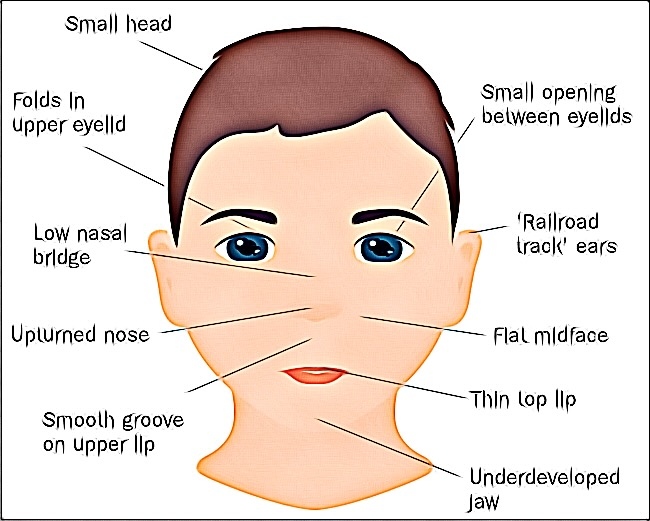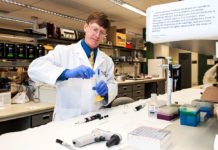Among the illnesses comprising the fetal alcohol spectrum is fetal alcohol syndrome (FASD). The condition can cause central nervous system anomalies, physical deformities, and severe learning and behavioral difficulties. Although certain symptoms can be treated, the disease cannot be cured.
What Is Fetal Alcohol Syndrome?
FAS is caused by alcohol entering the unborn child’s system, which occurs when a pregnant woman consumes alcohol. A portion of the alcohol taken during pregnancy crosses the placenta and enters the fetus.
Because a fetus’s liver cannot digest alcohol like an adult’s, alcohol can induce many negative effects in unborn children.
Alcohol can:
- Kill healthy cells, resulting in aberrant development
- Impair the development of nerve cells
- Decrease placental blood flow, depriving the fetus of oxygen and nutrition
- Damage the fetus’ brain with toxic alcohol byproducts
What Is Fetal Alcohol Syndrome In Adults
FAS is a condition that can have far-reaching implications that extend well into childhood. Numerous FAS patients struggle well into adulthood and for the remainder of their lives.
Physical Manifestations and Outcomes of FAS in Adults
Many of the physical repercussions of SARS continue throughout adulthood. However, these effects may be less pronounced in adults compared to children. Physical manifestations of FAS that frequently persist into maturity include short stature, small head size, and thin upper lip.
Mental Health and Behavioral Difficulties in FAS Adults
Mental health issues are prevalent among individuals with FAS, affecting 90% of those.
- Problems with attention, distraction, learning, and memory
- Problems with decision-making and planning
- Internalizing difficulties, such as depression, anxiety, social anxiety, and obsessive-compulsive disorder
Children with mental and behavioral issues but no physical defects may have an alcohol-related neurodevelopmental disorder (ARND). A child with ARND may exhibit developmental difficulties, including behavioral and learning issues, despite the absence of facial deformities characteristic of FAS.
Secondary Conditions of Adults with SARS
During maturity, when individuals are expected to take care of themselves, the impacts of FAS can be particularly challenging to manage. Adults with FAS frequently require housing, employment, transportation, and financial management assistance.
Moreover, the physical and mental implications of fetal alcohol syndrome outlined previously, adults with FAS are also at a higher risk for the condition’s secondary effects. Legal problems are a key secondary impact of the spread of FAS.
Alcoholic people with fetal alcohol syndrome typically have a considerably greater arrest and incarceration rate than those without this illness.
- According to research, 50% of persons with FAS will confront legal troubles at least once. Individuals with FAS frequently commit crimes due to the condition’s developmental and mental effects. A person may steal if, for example, they cannot comprehend the concept of ownership.
- 87% of individuals with FAS have never held a normal job, 70% are unemployed, and 80% require assistance with everyday activities.
- 66% reside in an assisted-living facility or institution; and
- 60% are affected by alcohol or drug use.
Numerous FAS patients require particular attention to navigating life properly. With assistance, many individuals with FAS can enjoy productive and reasonably independent lives.
What Are The Symptoms Of FAS In Children?
The severity of FAS indications is frequently apparent in early childhood and might vary. Typically, a newborn with FAS has a low body weight and is developing slowly. The infant may also exhibit a particular pattern of facial abnormalities, such as:
- Small eye sockets
- No crease between the nose and upper lip (philtrum) rather than smooth skin.
- Sagging cheekbones
FAS is frequently accompanied by alcohol-related birth abnormalities (ARBDs), including heart, kidney, skeletal, ear, and eye disorders.
Individuals with FAS may struggle to establish interpersonal boundaries throughout childhood. They may have an overwhelming craving for physical interaction and exhibit hyperactivity. They may also have difficulty remembering things, a short attention span, and difficulties with motor skills.

What Therapy Are Alternatives Available?
Identification of FAS
There is no particular medical testing for FAS. Thus a diagnosis is typically predicated on the presence of many risk factors. These consist of:
- Abnormal facial characteristics, such as a smooth philtrum
- Low body weight
- Disorders of the central nervous system, such as a small head size
- Hyperactivity, attention, and coordination issues
- Known maternal alcohol consumption during pregnancy
How to Diagnose Adult Fetal Alcohol Syndrome
The diagnosis of FAS in adults is comparable to FAS in children. However, it is complicated that children with FAS have more distinguishable physical characteristics than adults with the illness.
Additionally, obtaining an adult’s history of a mother’s alcohol consumption during pregnancy may be more challenging. Nevertheless, physicians can assess the presence of certain elements, such as:
- A little skull
- A slender upper lip
- Small size
- Known behavioral or cognitive difficulties
Therapeutic Options
Unfortunately, no cure exists for FAS. The syndrome is an incurable, permanent illness; nevertheless, it is treatable. A child’s development may be aided by early intervention treatment if diagnosed with FAS.
- Medications aimed at alleviating certain symptoms of FAS, such as depression, as a person ages
- Therapy to support both behavioral and academic objectives
- Parenting or caregiver education
In addition, counseling services are offered for parents and caregivers of FAS-affected children. If a mother continues to drink alcohol after the birth of her kid, rehabilitation facilities can aid in her recovery.
How Might This Be Prevented?
The most obvious strategy to prevent FAS is to abstain from alcohol consumption throughout pregnancy. This syndrome can be avoided if alcohol is not ingested during this period. If you attempt to conceive or suspect that you may already be pregnant, you should also avoid consuming alcohol.
When a pregnant woman drinks, the blood flows through her body and into the placenta, reaching the developing fetus. Because a fetus cannot break down alcohol as quickly and efficiently as an adult, alcohol is considered to cause FAS because it remains in the fetus’s body for much longer.
Although no level of alcohol intake is deemed safe, women who consume large amounts of alcohol during pregnancy increase their child’s risk of having FAS. The only option for a pregnant woman to prevent the development of fetal alcohol syndrome is to refrain from all alcohol use.
Perform a pregnancy test as soon as you suspect you could be pregnant. If you realize that you drank after the moment of conception, you must immediately inform your doctor and cease drinking.
There is no safe alcohol intake threshold during pregnancy. If you are pregnant or attempting to become pregnant and struggling with alcohol dependence or addiction, counseling is the greatest option for your unborn child’s health.
Conclusion
Depending on the severity of the symptoms of fetal alcohol syndrome in adults, some individuals with a substance use disorder can receive treatment at a specialist facility. Our holistic approach to addiction treatment is essential to the recovery process, including evidence-based therapies such as behavioral therapy.
With highly-skilled addiction treatment specialists trained to give clients the resources and support they require to achieve abstinence and maintain long-term health and sobriety. The integrated treatment programs for patients with co-occurring mental health issues, such as depression, are designed to treat both conditions simultaneously.
Sources:
https://www.cdc.gov/ncbddd/fasd/facts.html
https://www.ncbi.nlm.nih.gov/pmc/articles/PMC6876481/
https://www.ncbi.nlm.nih.gov/pmc/articles/PMC4629517/
















